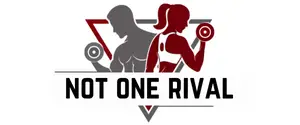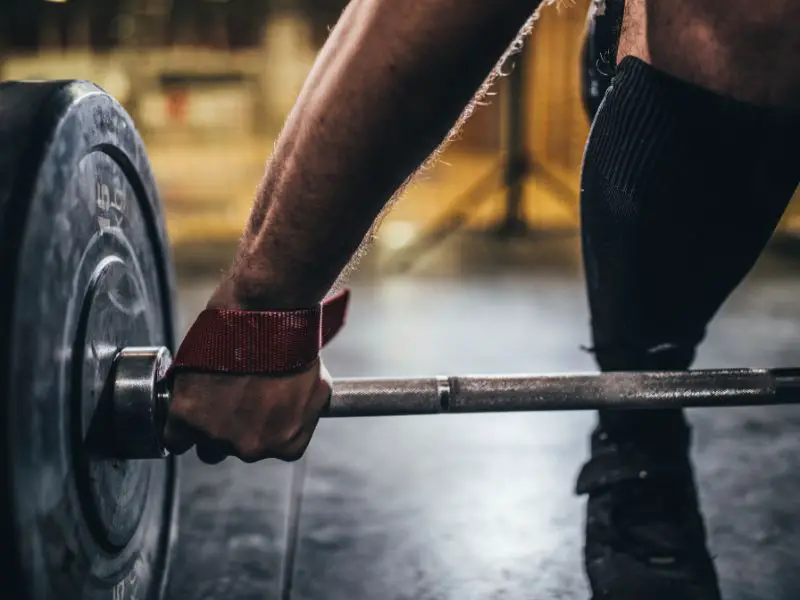Anyone training for strength and mass will want to get well acquainted with barbells. After all, many of the exercises you’ll want to focus on will use one.
If you’re trying to buy the right barbell for a home gym or to understand how different barbells impact your grip in commercial gyms, you may have heard about the importance of knurling on a bar. But what is barbell knurling? How does it impact your lifts and success with different types of barbells? I’ll break it all down here for you in this comprehensive guide. Let’s get into it.
What is Barbell Knurling?
Barbell knurling is the rough part of the barbell where you should be placing your hands during lifts. It’s meant to provide friction during lifts, which helps maintain your grip.
Those who have been working out for some time will begin to notice that they develop a preference for certain types of barbells. You’ll find there are several options with varying widths, knurling patterns, and intensities. Newer lifters can even find that the knurling hurts their hands a bit at first. But don’t worry. You’ll get used to it over time as you lift more.
When picking out the right knurling for your needs, most lifters will want to consider two factors. Which helps you lift the most weight? And are there any requirements for regulated competitions you may be competing in?
With that in mind, you’ll want to start diving into the differences between types of knurling patterns. The top three would be hills, mountains, and volcanoes. Those names probably sound awfully confusing, so let’s explain each in more detail.
Types of Barbell Knurling
Let’s break down the different types of knurling and specific barbells they may be associated with.
1. The Hill
A hill knurl pattern is identified by two things:
- The lines between the bumps within the knurling will form a diamond shape.
- The bumps within the knurling are more rounded for a smoother grip.
Typically, a hill pattern is an excellent starting point for beginners. It’s why you’ll often see this type of knurling on barbells at commercial gyms. It’s also common on bars like an EZ curl bar that don’t require a ton of grip strength to hold it.
When you’re first starting to get into a lifting routine, a barbell can feel very rough on the hands. It’s simply because your body isn’t used to it. Opinions within the fitness community differ a bit here, but starting with a smoother knurl and working your way up can be a good way to go. As you lift more often and heavier weights, your hands will build calluses that will start to help.
Then, when you find that your grip is failing more often as you get into heavier weights, you can look into more intense knurling patterns to help.
Additional Note
An additional thing to consider is that some lifters like using a hill pattern on the bar when specifically training for grip. A hill pattern is just naturally harder to hold onto during heavier lifts. So, if you’ve been struggling with your grip on rows, deadlifts, rack pulls, or similar lifts, try training with a hill pattern knurl for a bit.
Once you can increase how much weight you grip with a hill knurl, you should feel a massive difference when switching back to a mountain or volcano pattern.
2. The Mountain
Want the most aggressive knurl for the best grip? The mountain may be your go-to.
To identify a mountain knurl, you’ll typically notice that the bumps in the knurling will be much closer together than other options. Plus, the bumps will have tiny peaks carved into the top. Those peaks are meant to slightly dig into your palms during lifts to reinforce your grip. This is typically the most common on deadlift bars or those designed specifically for powerlifting.
When you first use a mountain knurl, it’s common to feel a bit more pain in your palms after your lifts. If that happens, don’t worry. Just keep in mind that you should work into this new knurl slowly. Over time, the pain will subside, and it’ll feel like second nature.
Plus, most lifters will really like it since they can grip and rip the bar off the ground much more easily. You may even add a few pounds to your max deadlift right away.
3. The Volcano
The coolest sounding of the 3 types of knurling, the volcano, is a bit of a hybrid between the previous two. It combines the diamond pattern of the bumps on the hill knurl (adding space between them) while still having the small peaks at the top, like mountain knurling.
Since the volcano has bumps that are a bit more spaced out, it makes it less intense. It can be a great fit for something like Olympic weightlifting, where you may want a hybrid barbell while throwing the weights around at all kinds of angles.
Plus, bodybuilders often prefer this type of knurl too. Most bodybuilding training won’t have you lifting max reps all the time. So, going with something where you can grip it well without it being too intense on your palms can be a good fit.
What’s the Knurling in the Center of the Barbell For?
Another common question many lifters have is about the knurling in the center of barbells. You don’t put your hands there, so what’s it for? In general, that center knurling is meant to help you line up with the barbell when performing squats. It’ll also prevent it from moving around and getting displaced while on your back. It’s a great thing to have for safety and top performance.
Why Do Some Bars Not Have Center Knurling?
Barbells that don’t have that small strip of knurling in the center of the barbell also have a use case. Those are meant to prevent your legs from getting scratched while performing deadlifts. So, if you have any issues with that, it’s a good type of barbell to look into buying.
What Are Knurling Rings?
You may have also noticed that there are smooth rings within the knurling on each side. These are meant to be an aid to help you line your hands up on certain lifts.
That said, you don’t have to always put your hands on the rings. Depending on your build, they may be too wide for certain lifts.
Personally, I don’t have a huge wingspan, so I typically consider putting my hands on the rings a wide grip. If I was going for something like a wide grip row, I’d put my pinkies or ring fingers of each hand on the rings. For a normal barbell row, I would have my hands placed well inside of the rings on each side. You need to figure out what feels best for you on each lift.
How Far Apart Should Knurling Rings Be?
Typically, the standards for where the knurl rings are placed depend on what type of lifting the bar is designed for.
Ring Placement for Powerlifting or Bodybuilding
If it’s meant for powerlifting or bodybuilding, the standard is having the rings placed 32 inches apart from each other. That aligns with the International Powerlifting Federation’s standard to help lifters line up their grip on the bench press.
Again, that’s still a personal preference thing. I personally keep my grip well inside the rings while benching because it feels much better on my shoulders.
Ring Placement for Olympic Lifting
For Olympic lifts, you would want the rings further apart. Most lifters take a much wider grip when performing exercises like a snatch. The International Weightlifting Federation standardizes rings placed 36 inches apart for bars used in competition settings.
Is Knurling Really All That Important?
Knurling is very important to maintain proper grip and alignment on the bar while lifting. Think of how hard it would be to grip a completely smooth bar. You simply wouldn’t be able to maximize how much you lift, limiting your potential in the gym. Plus, knurling to help with grip is there for your own safety.
The Risks You Take With Bad Knurling
If you use a barbell with bad knurling that is old and worn or not prominent enough, there are some risks to it.
Firstly, if you drop weights suddenly during a lift due to a lack of grip strength, it could cause injury in some cases. Generally, there isn’t too much risk for this, but think of a scenario where you’re deadlifting and you lose grip with one hand. Then, the weight could swing down and hit you in the foot or leg, probably causing a pretty significant injury.
Additionally, think about fighting hard through a tough lift, and suddenly you lose your grip. Your body could snap out of position at that moment, throwing out your back, shoulders, or other sensitive body parts.
It’s better to have the right knurling to ensure you have a tight grip on the bar at all times. That’s especially true if you simply want to lift as much weight as you can without grip as a limitation.
Conclusion
By now, you should have a good idea of how knurling impacts your lifts.
If you’re not sure which type of knurling or bar is best for you, don’t be afraid to experiment with some different options. We all have different body mechanics and lifting goals. What works for someone else may be completely different than what works for you.
With this knowledge in hand, you should be well-equipped to make an educated decision.
FAQ
HOW DO I CHOOSE A BARBELL WITH GOOD KNURLING?
Choosing the right knurling on a barbell requires some important considerations. You want to think about the type of lifting you want to do. For instance, a powerlifter may value knurling in a mountain pattern since it’ll provide the most grip on heavy lifts.
Then, try to buy bars from brands with good quality standards. Rogue Echo barbells, Rogue Ohio bars, or Texas bars are all good options to help you optimize your lifting setup. The Ohio Bar from Rogue is one of my personal favorites.
Can I Improve the Knurling on My Existing Barbell?
Unfortunately, it isn’t possible to re-knurl a bar after it wears down. Your best bet is to buy a new barbell in that instance. You can also use lifting chalk or lifting straps as a temporary fix to give yourself some extra grip for safe lifting while you work on replacing the bar.
How Does the Type of Exercise Impact the Type of Knurling Needed?
Depending on the type of exercise, you may need more or less intense knurling based on the level of grip strength and angles of the lift. For instance, a heavy deadlift requires a lot of grip strength, so you’d want a more intense knurl. Whereas something like a clean and jerk requires you to switch your positioning more, so a moderate knurl is a better fit.
Contemori, S., rhythm, A. to scapulohumeral, Biscarini, A., Finley, M. A., Hermens, H. J., Johnson, G. R., Picco, B. R., Thigpen, C. A., Wu, G., Borstad, J. D., Contemori, S., & Cools, A. M. (2019, January 16). Effects of scapular retraction/protraction position and scapular elevation on shoulder girdle muscle activity during glenohumeral abduction. Human Movement Science. https://www.sciencedirect.com/science/article/abs/pii/S0167945718304743?via%3Dihub
- Best Pull Up Bar Diameter For You: A Comprehensive Guide - September 4, 2023
- Grip Talk: What is Barbell Knurling & Why It Matters? - September 4, 2023
- Say Goodbye to Shoulder Pain: How to Avoid Pain from Dips - September 4, 2023

